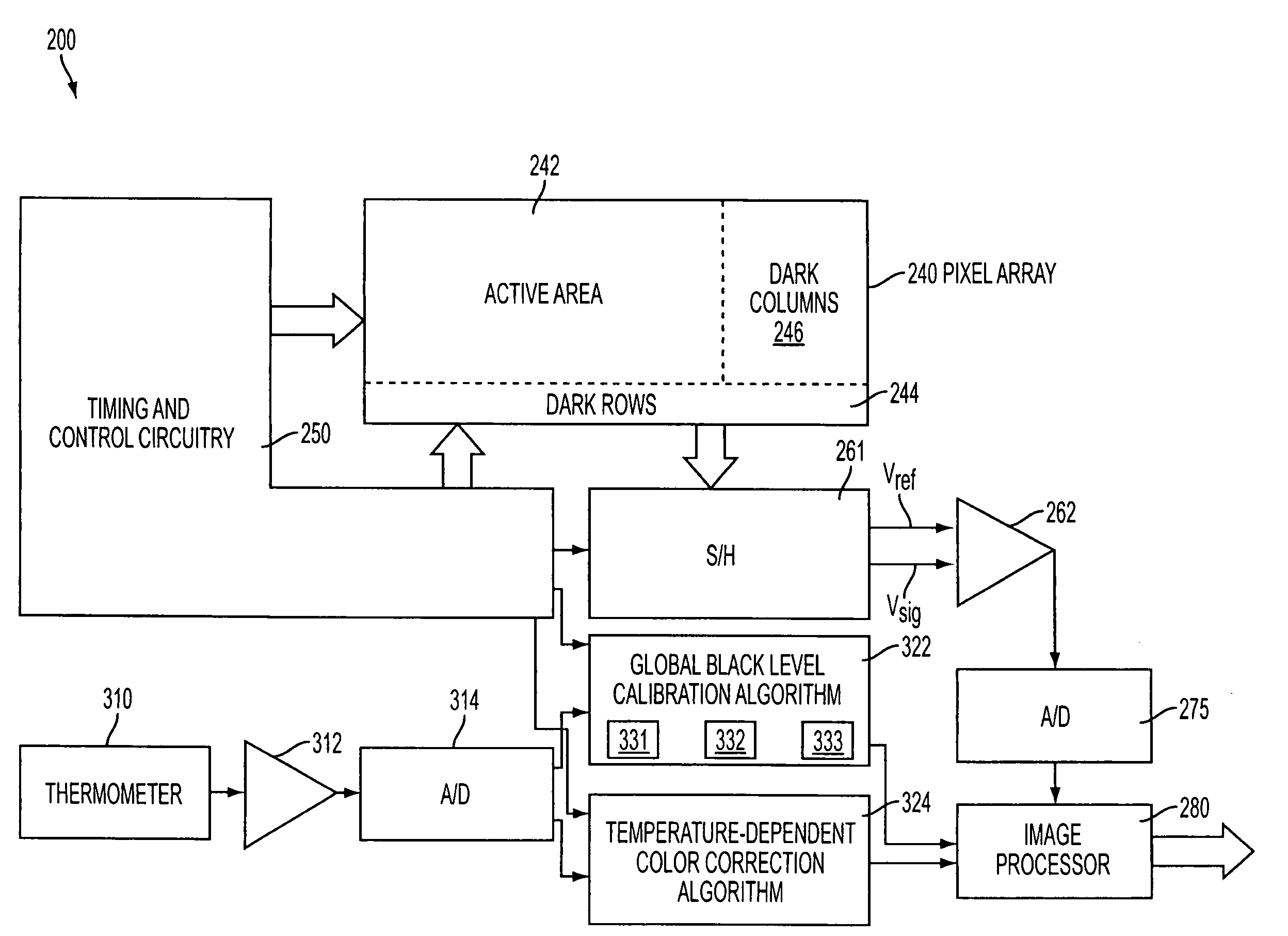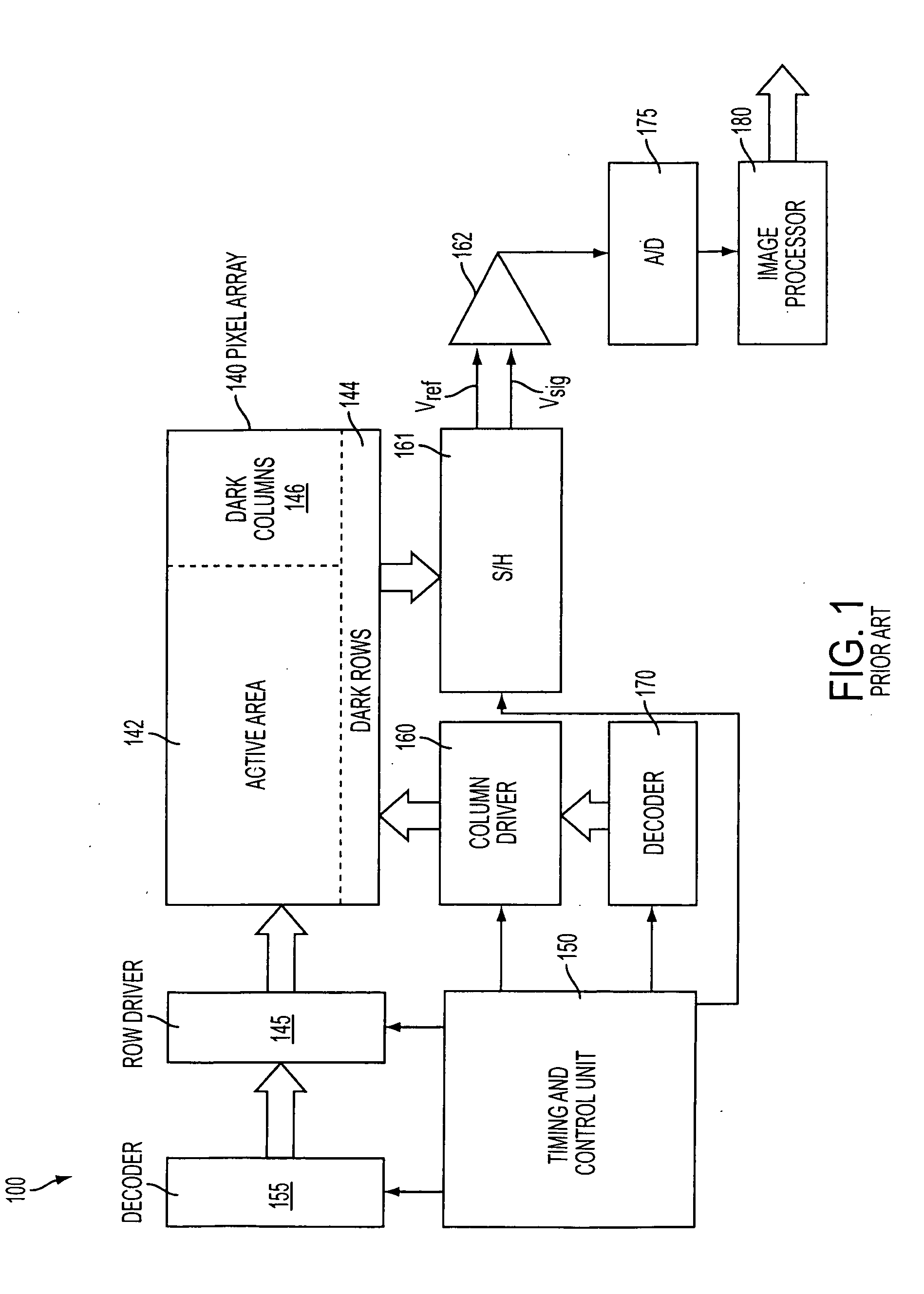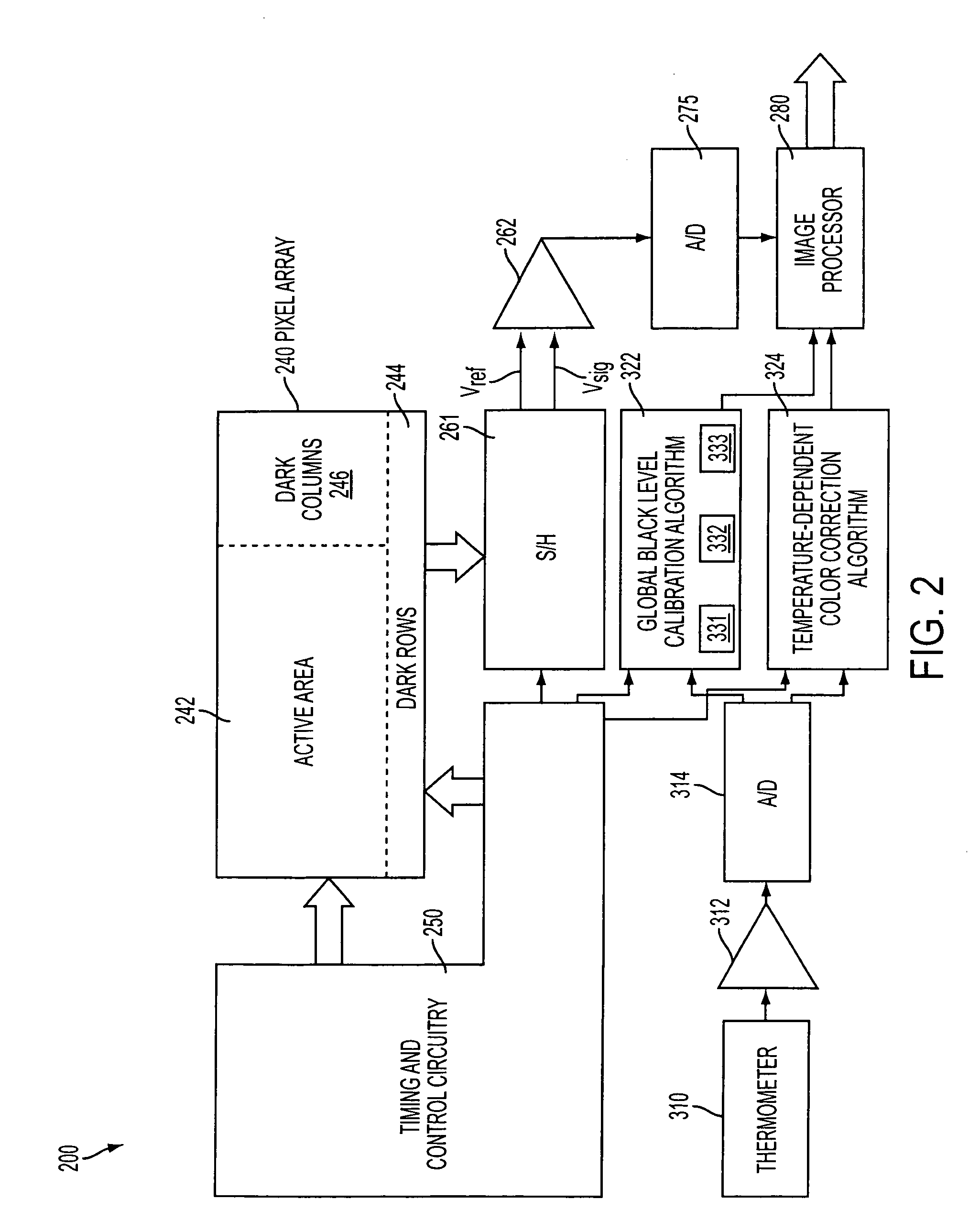Image sensor with built-in thermometer for global black level calibration and temperature-dependent color correction
a technology of image sensor and thermometer, which is applied in the field of black level calibration and temperature-dependent color correction of semiconductor imager, can solve the problems of noise sources only affecting specific portions of the sensor array, distortion of the resulting digital image, and the entire sensor array
- Summary
- Abstract
- Description
- Claims
- Application Information
AI Technical Summary
Problems solved by technology
Method used
Image
Examples
Embodiment Construction
[0014]One method that has been used in response to the disadvantages of using optically black pixels to set the black level value, as explained above, has been to tie the photodiode of some or all pixels in the dark rows 144 (FIG. 1) to a fixed voltage, as presented in U.S. patent application Ser. No. 11 / 066,781. The fixed voltage is, in essence, a fixed black level for the pixel array 140. The advantages of this method is that the black level calculation is not influenced by blooming, IR reflections, etc., and that every frame utilizes a constant and unchanging black level. However, tied pixels are not sensitive to any changes in dark current due to temperature. Thus, a black level generated by utilizing tied pixels may not accurately compensate for the noise caused by temperature dependent dark current.
[0015]The noise generated by thermal-induced dark current can be calculated and compensated for by directly measuring the temperature of an image sensor. In an example embodiment of...
PUM
 Login to View More
Login to View More Abstract
Description
Claims
Application Information
 Login to View More
Login to View More - R&D
- Intellectual Property
- Life Sciences
- Materials
- Tech Scout
- Unparalleled Data Quality
- Higher Quality Content
- 60% Fewer Hallucinations
Browse by: Latest US Patents, China's latest patents, Technical Efficacy Thesaurus, Application Domain, Technology Topic, Popular Technical Reports.
© 2025 PatSnap. All rights reserved.Legal|Privacy policy|Modern Slavery Act Transparency Statement|Sitemap|About US| Contact US: help@patsnap.com



